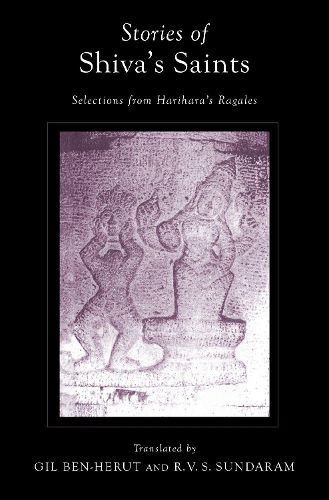Readings Newsletter
Become a Readings Member to make your shopping experience even easier.
Sign in or sign up for free!
You’re not far away from qualifying for FREE standard shipping within Australia
You’ve qualified for FREE standard shipping within Australia
The cart is loading…






Hampeya Harihara lived between the late twelfth and early thirteenth centuries in Hampe (a.k.a. Hampi) and wrote in Kannada, a language of the south-Indian Dravidian family. With the aim of reaching large segments of the population, Harihara set out to develop a new style of narrative literature in Kannada, one that introduced straightforward plotting, quotidian characters, moderate use of literary ornamentation, simple prosody, and highly emotional expressivity. The work he composed in this style, the Shivasharanara Ragalegalu ("Stories of Shiva's Saints Written in the Ragale Meter") inaugurated a new era in Kannada literature. As the first English translation of eighteen stories from this work, this book serves as an invitation to contemporary readers to enjoy and appreciate a text that is rich with religious fervor, antinomian social agendas, raucous characters, and gripping drama-but also delicate poetry and significant historical importance.Stories of Shiva's Saints reveals Harihara's inclusive and flexible religious and social vision, according to which Shiva devotees from different backgrounds can share devotional practices and values while maintaining communal and personal commitments of different kinds. Harihara's work is of major historical significance as the first text to narrate the lives of important religious figures and vachana poets of the time, such as Allama Prabhu and Akka, and in particular Basava, the most well-known leader of the nascent tradition today identified with the Virashaivas/Lingayats.
$9.00 standard shipping within Australia
FREE standard shipping within Australia for orders over $100.00
Express & International shipping calculated at checkout
Hampeya Harihara lived between the late twelfth and early thirteenth centuries in Hampe (a.k.a. Hampi) and wrote in Kannada, a language of the south-Indian Dravidian family. With the aim of reaching large segments of the population, Harihara set out to develop a new style of narrative literature in Kannada, one that introduced straightforward plotting, quotidian characters, moderate use of literary ornamentation, simple prosody, and highly emotional expressivity. The work he composed in this style, the Shivasharanara Ragalegalu ("Stories of Shiva's Saints Written in the Ragale Meter") inaugurated a new era in Kannada literature. As the first English translation of eighteen stories from this work, this book serves as an invitation to contemporary readers to enjoy and appreciate a text that is rich with religious fervor, antinomian social agendas, raucous characters, and gripping drama-but also delicate poetry and significant historical importance.Stories of Shiva's Saints reveals Harihara's inclusive and flexible religious and social vision, according to which Shiva devotees from different backgrounds can share devotional practices and values while maintaining communal and personal commitments of different kinds. Harihara's work is of major historical significance as the first text to narrate the lives of important religious figures and vachana poets of the time, such as Allama Prabhu and Akka, and in particular Basava, the most well-known leader of the nascent tradition today identified with the Virashaivas/Lingayats.